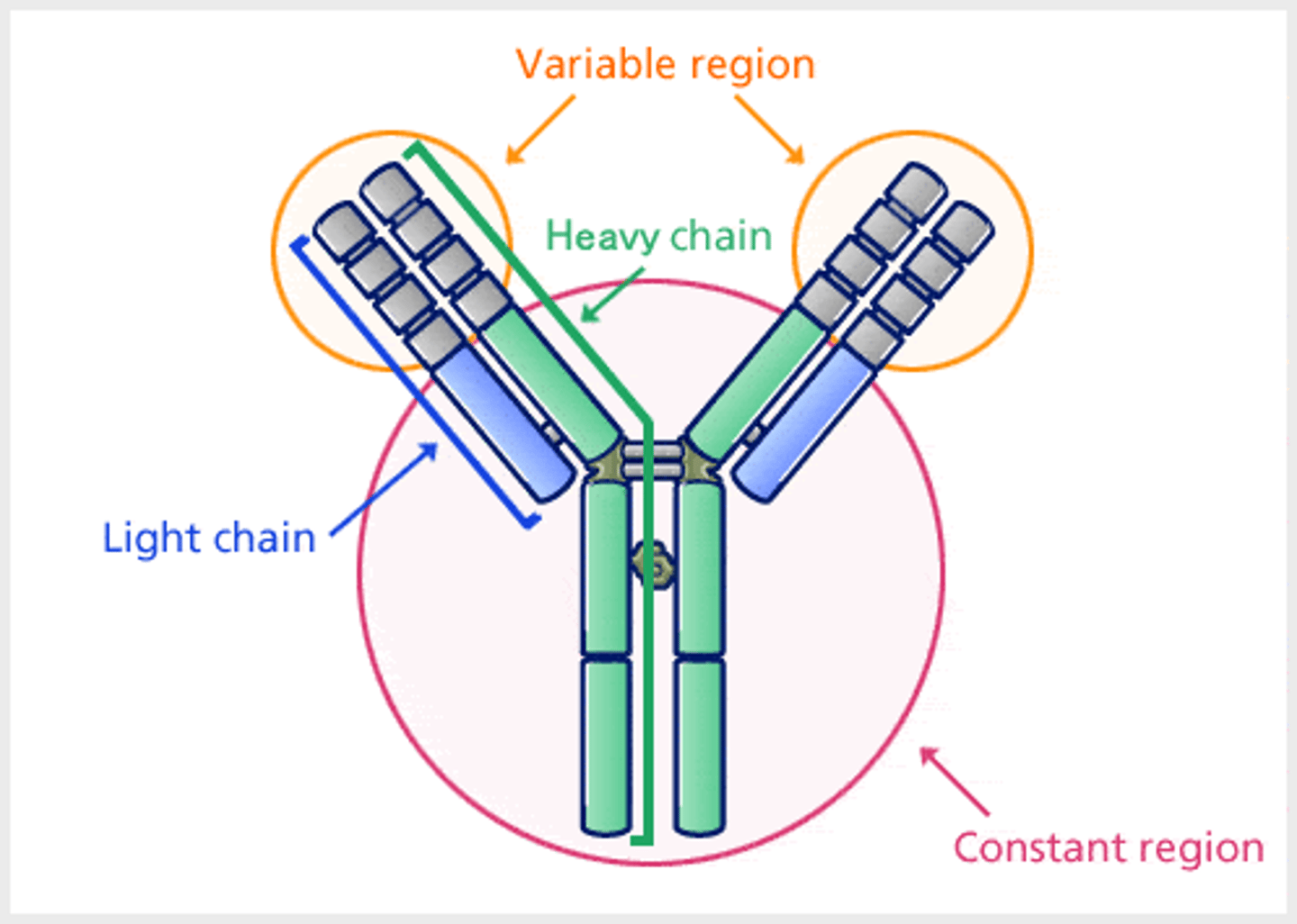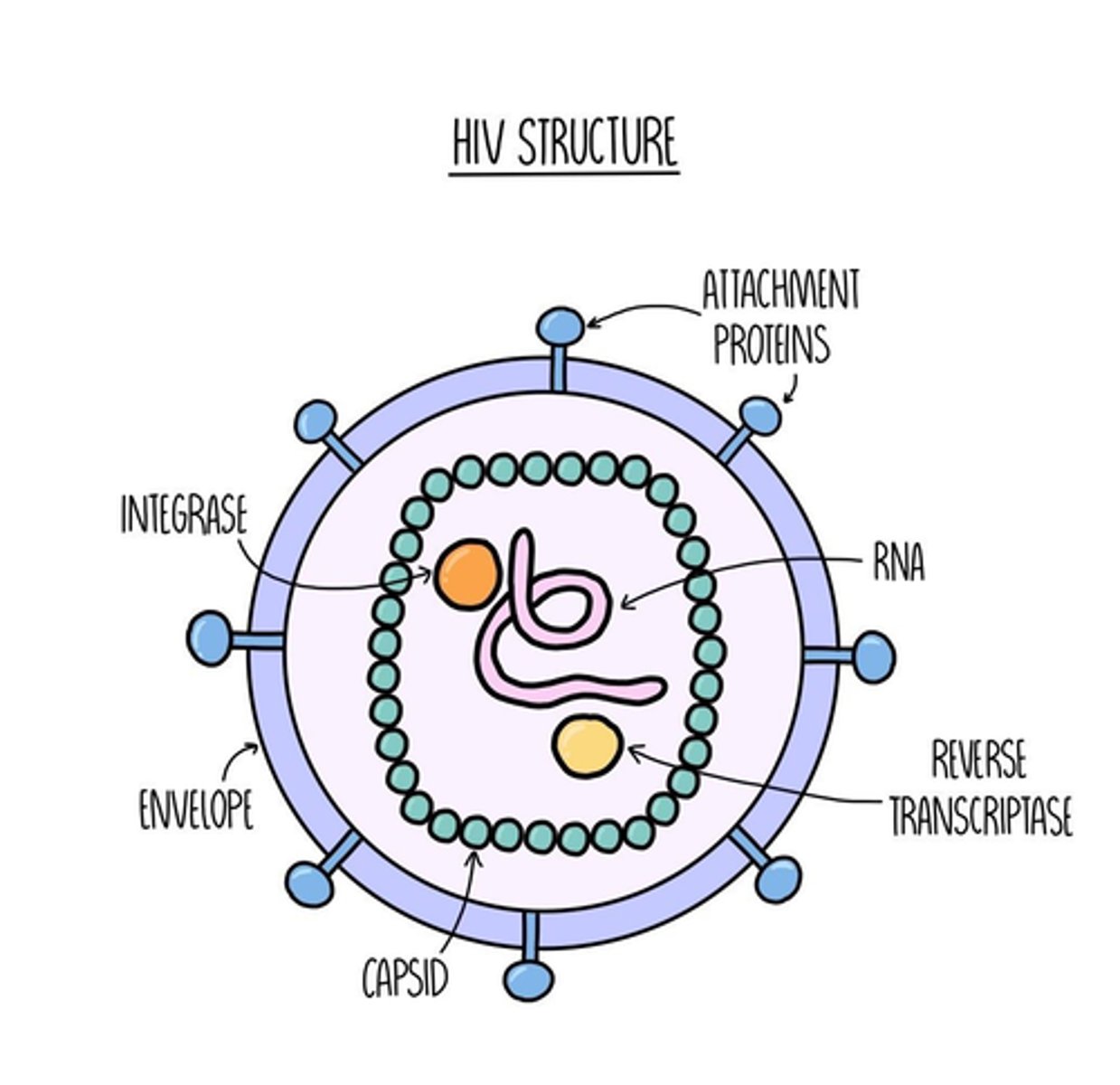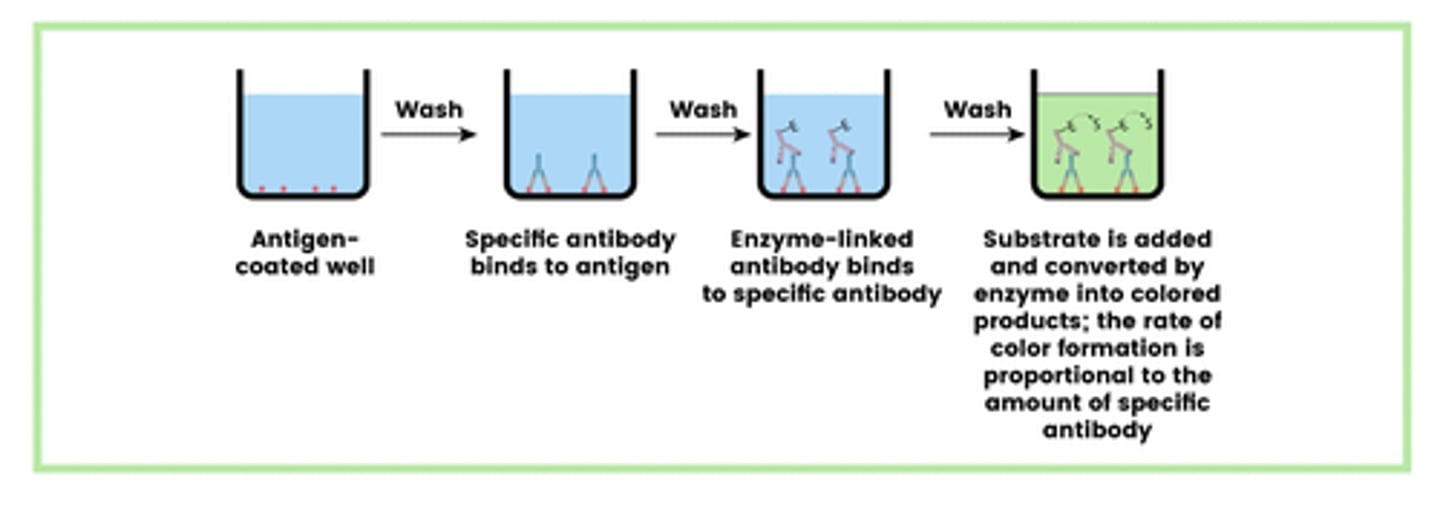StemUp: AQA A level Biology 3.2.4 Cell recognition and the immune system
1/40
There's no tags or description
Looks like no tags are added yet.
Name | Mastery | Learn | Test | Matching | Spaced |
|---|
No study sessions yet.
41 Terms
What type of molecules on the surface of each cell help our immune system to identify it? (1)
Proteins
What are examples of targets identified by the immune system using proteins on the surface of cells? (4)
- Pathogens
- Cells from other organisms of the same species
- Abnormal body cells
- Toxins
What are pathogens? (1)
Disease causing micro-organisms
What are 4 examples of pathogens? (4)
- Bacteria
- Viruses
- Fungi
- Parasites
What is meant by the term "antigens"? (1)
Proteins found on foreign organisms which trigger an immune response
Describe how antigen variation arises and why immunity to one strain does not confer immunity to new variants. (3)
- Some organisms have a high mutation rate and therefore, lead to antigen variation
- Even though a person may become 'immune' to one strand
- This will not provide immunity to new forms as they wont be recognised by memory B cells and antibodies
Describe the process of phagocytosis (4)
1. The antigen on the pathogen or foreign cell attracts the phagocyte/macrophage
2. The phagocytes recognises that the cell is foreign using receptor proteins and binds to the antigen on the pathogen
3. Then the phagocytes englufs the pathogen forming a vesicle around it inside the cell, an example of endocytosis (phagosome)
4. This phagosome then fuses with a lysosome to form a phagolysosome
5. Then the hydrolytic enzymes digest the pathogen
6. macrophages may present parts of the pathogen on its cell membrane, antigen-presenting cells
Describe the process of the cellular/cell mediated response (3)
First, the receptor proteins on the Helper T cells bind to the antigens on antigen presenting cells
This stimulates clonal expansion and causes the T cells to divide rapidly via mitosis
These clones then differentiate into; cytotoxic T cells, which produce perforin to make holes in pathogen cells and lyse them, memory T cells, which allows for rapid response to reinfection, and, more helper T cells, which stimulate B cells and phagocytisis
What is the role of the activated cytotoxic T cells? (2)
- Attach to specific antigens on a pathogen
- Secrete perforin to make holes in the cell membrane of foreign cells/pathogens
- this causes water to rush in and results in the cell dying
What is the role of the new helper T cells developed from the cloned helper T cells? (1)
Stimulate B lymphocytes to divide into plasma cells and secrete antibodies
What do is the role of the memory T cells? (2)
Remain in blood after an infection for a quicker secondary response
What are antibodies? (2)
Proteins produced by B lymphocytes which have binding sites complementary to the antigens found on pathogens
they help destroy pathogen via agglutination or marking
Draw the structure of an antibody (5)
- Antigen binding site (NOTE: we tried our best to find a diagram that shows it but its on the top left and top right of structure so make sure you label it)
- Light chain
- Heavy chain
- Constant region
- Variable region

Describe the pattern of amino acids in the constant region (1)
The sequence of amino acids is the same for all molecules of the same type of antibody
Describe the pattern of the amino acids in the variable region (2)
- The amino acid sequence varies between different antibody molecules
- So specific to different antigens
Describe the formation of antibody-antigen complexes (4)
1. Antigen binding sites on antibodies have a specific tertiary structure
2. That is complementary to the structure of the antigen to which they attach to
3. This forms an antibody-antigen complex
4. Which stimulates agglutination
Describe the process of agglutination (3)
1. Antibody uses its two antigen-binding sites to attach to the same antigen present on two different cells
2. This joins the cells together to form a clump (agglutinated mass) of cells
3. Clump is then more easily destroyed by e.g. phagocytosis
Describe how phagocytosis is activated in bacteria (3)
1. Antibody attaches to antigen on the surface of a bacteria and identifies it for destruction by the phagocyte
2. Receptors on the phagocyte recognise and bind to antibody
3. This enables phagocyte to perform phagocytosis
Describe the role of plasma cells in the primary response (3)
1. Produce antibodies and secrete them into the blood
2. Antibodies will bind specifically to antigens to form antibody-antigen complex
3. This will stimulate the processes that destroy the antigen / pathogen
What is the difference between plasma cells and B cells? (2)
- Plasma cells are the effector form of B cells
- When a B cell is activated by its antigen, it can differentiate into a plasma cell
How do memory B cells arise in the blood? (1)
Some B cells are simulated to divide into memory B cells
Describe the role of memory cells in the secondary response (3)
- If the same antigen is encountered by memory B cells again, they will divide and develop into plasma cells
- These plasma cells will secrete antibodies quicker and at a higher concentration than the primary response
- Therefore, provides immunity
Describe how a vaccine works (5)
1. Vaccine contains antigens from a dead/weakened pathogen
2. T helper cell with a complementary receptor protein binds to the antigen
3. T cell stimulates B cell
4. B cell secretes large amounts of antibody
5. B cell divides to form clones that all produce the same antibody
Describe the term 'herd immunity' (2)
- The higher the percentage of people in a population that are vaccinated against a particular antigen/pathogen, the smaller the chance of infection
- This is because the probability of encountering an unprotected individual with that particular pathogen will be lower
NOTE: This will most likely come up as an evaluation type question but AQA have stated that you must know what the term herd immunity means
What are the differences between active and passive immunity? (6)
- Active immunity involves memory cells, passive immunity does not
- Active immunity involves production of antibodies by plasma cells. Passive immunity involves antibodies introduced into the body from the outside
- Active immunity is long term, because antibody produced in response to antigen. Passive immunity is short term, because antibodies that are given are broken down
- Active immunity can take time to develop or work. Passive immunity is fast acting
NOTE: As this is a difference and not a compare question, you can separate the points however you like.
Why are antibiotics ineffective against viruses? (2)
- Antibiotics affect cellular structures either by inhibiting their division or destroying them
- Viruses do not contain cellular structures
NOTE: Remember this explanation, far too often, examiners see generic answers being given for this!!
Draw the structure of HIV (5)
- Capsid
- Glycoprotein
- Viral envelope
- RNA
- Reverse transcriptase

Describe the process of HIV replication (5)
1. Attachment proteins on surface of HIV are used to attach to receptors on helper T cell
2. RNA is injected into the host cell
3. Reverse transcriptase converts RNA to DNA
4. Viral proteins are produced
5. Virus particles assembled and are released from the cell to infect others
Describe how HIV is replicated once it is inside helper T cells (4)
1. RNA is converted to DNA using reverse transcriptase
2. DNA is incorporated into helper T cell's DNA
3. DNA is transcribed into HIV mRNA
4. HIV mRNA is then translated into HIV proteins for assembly into new viral particles
Describe phase 1 in the symptoms of AIDS (1)
The body produces HIV antibodies and there may be a short flu-like illness
Describe phase 2 in the symptoms of AIDS (2)
- HIV postive phase
- Period between infection and the onset of clinical signs
Describe phase 3 in the symptoms of AIDS (2)
- AIDS-related complex (ARC)
- Resulting from variety of infections as number of helper T cells decrease
Describe phase 4 in the symptoms of AIDS (3)
- Infection of body organs
- Possible development of cancers
- Death stage
Describe the uses of monoclonal antibodies in targeting medication (2)
- You can attach therapeutic drugs to a monoclonal antibody
- E.g. cancer cells display a different antigen to healthy cells so can be targeted by attaching a toxic drug to a monoclonal antibody
Describe how monoclonal antibodies are used in medical diagnosis (2)
- To detect presence of specific antigens (i.e. pathogens) in body fluids to diagnose if a person is infected with a particular disease
- To detect presence of specific antibodies produced by a person against an antigen
What are some brief ethical issues associated with the use of vaccines? (2)
- There is a lack of information provided about possible side effects
- Policies requiring vaccination may conflict with personal freedom and autonomy
What are some brief ethical issues associated with the use of monoclonal antibodies? (2)
- Monoclonal antibodies are often expensive, raising concerns about who can afford or access these treatments
- Development of monoclonal antibodies requires research which is usually done on animals
What is the difference between direct and indirect ELISA test? (2)
- Direct = used to detect antigens
- Indirect = used to detect antibodies
Draw a diagram for the direct ELISA tests and explain what happens in each step (4)
1. Well is coated with monoclonal antibodies
2. Antigen is added which binds to antibody
3. A second monoclonal antibody binds to antigen
4. Substrate is added and converted by enzyme into coloured product

Draw a diagram for the indirect ELISA tests and explain what is happens in each step (4)
1. Well is coated with antigen
2. Specific antibody is added which binds to antigen
3. Enzyme-linked antibody binds to specific antibody
4. Substrate is added and converted by enzyme into coloured product

What is the rate of colour formation in direct ELISA test proportional to? (1)
The amount of antigen